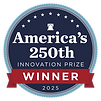THE OPTIONS.

31 STATES, INCLUDING D.C. AND PUERTO RICO, OFFER EDUCATION CHOICE PROGRAMS
65 DIFFERENT EDUCATION CHOICE OPTIONS ACROSS THE COUNTRY
$335 MILLION HAS BEEN ALLOCATED TO EDUCATION SAVINGS ACCOUNTS
20/21 STUDIES FOUND SCHOOL CHOICE IMPROVES PUBLIC SCHOOL OUTCOMES
Education choice that improves outcomes comes in many shapes and sizes.
These include, but are not limited to, public schools, charter schools,
magnet schools, Education Savings Accounts, tuition tax credit scholarships, and more.
PUBLIC SCHOOLS
Public schools are very much part of education choice. When families move from one district to another based on the quality of schools, they are exercising a form of education choice. Unfortunately, not all families can afford this option. This results in inequities in the public school system and lack of opportunity among students. Idaho currently spends roughly half of its state budget on K-12 public schools.
CHARTER AND MAGNET SCHOOLS
Charter schools are public schools created by school districts, colleges, nonprofit organizations and other entities.These schools are allowed to determine many of their own policies and practices and they are not allowed to charge tuition. 45 states and the District of Columbia have passed laws allowing for the creation of public charter schools. Magnet schools, permitted in each of the 50 states, are public schools operated by school districts (or groups of school districts) that allow kids to focus on a specific learning track, such as STEM, medical science, or performing arts. These schools are free to attend and there are more than 4,000 magnet schools across the country. In some states, there are no freestanding magnet schools, but there are magnet programs available in traditional public schools.
EDUCATION SAVINGS ACCOUNTS
Education savings account programs give parents the power to use their children's state education dollars for a variety of educational purposes. Education savings account programs create personal accounts that store a child’s state education dollars. With ESAs, parents can use education dollars to pay for school tuition and fees, textbooks, tutoring and special therapies and other approved expenses, so a child’s education is truly customizable. Participating families are able to choose the best education for their children through multiple providers.
TUITION TAX CREDIT SCHOLARSHIPS
Tax credit scholarship programs give families greater access to high-quality private schools by providing incentives to assist in expanding the opportunity to more students. Scholarship tax credit programs create new pools of funding so that children can receive scholarships to attend the private schools of their parents’ choice. Corporations and individuals make private donations to nonprofit organizations that provide scholarships to eligible children. In return, the corporations and individuals receive a state income tax credit. There are 21 scholarship tax credit programs operating across the country, and research has demonstrated that these programs are positive for student achievement and save money for state and local governments.
VOUCHERS
Voucher programs allow education dollars to “follow the child,” enabling parents to select private schools and receive state-funded scholarships to pay tuition. These scholarships are usually targeted to students who come from low-income families, have special needs or currently attend a failing public school. Research has demonstrated that vouchers increase student achievement, boost graduation rates, and help public schools improve. They also lead to high parental satisfaction rates.



